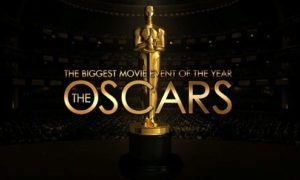Oscar knows PR
Posted At: February 13, 2012 1:45 PM
by Katie Kallam
 It’s Hollywood’s biggest night of the year. The red carpet is rolled out; the celebs don their finest threads; and the world waits with baited breath to find out who will be taking home the golden statues this year. It’s the 84th Academy Awards.
It’s Hollywood’s biggest night of the year. The red carpet is rolled out; the celebs don their finest threads; and the world waits with baited breath to find out who will be taking home the golden statues this year. It’s the 84th Academy Awards.
On February 26, more than 30 million viewers will tune in to ABC to find out if their favorite film won the big prize. But the Oscar telecast of today is a far cry from its comparatively humble beginnings. On May 16, 1929, the first Academy Awards presentation was held in Hollywood honoring excellence in cinema. Admission cost $5, and 270 guests looked on as Wings took home the prize for outstanding picture.
Today, the Oscars telecast has become one of the most highly anticipated, globally televised events of the year. However, some people criticize the awards show for being long, boring and self-indulgent. So how does the Academy of Motion Picture Arts and Sciences make the same concept interesting and exciting to viewers year after year? The Academy faces a tremendous public relations obstacle of keeping viewers’ interest with new concepts while remaining faithful to the tradition of the awards show and not becoming too gimmicky.
According to an article by MMI Public Relations, the Oscars is a public relations success for three reasons.
It was the first. Before movies were considered a legitimate art form, the Academy started the Oscars to bring substance and credibility to cinema. People trust the Oscars. Each year, nominated films see an increase in dollars spent at the box office and in DVD sales.
Second, the Oscars is exclusive. The Academy is very choosey as to how many categories there are and how many nominees can occupy each category. Again, according to the MMI Public Relations article, excellence in make-up did not receive its own award category until 1981, and stunt performers are still being denied a category.
Finally, the Academy maintains its legacy. The awards show isn’t the only thing the Academy of Motion Picture Arts and Sciences does. It is known worldwide as a proponent of film preservation and history.
In addition to these three reasons, the telecast has remained a must-see television event because of a combined PR effort by the Academy and ABC, the network that has aired the awards show since 1975 and will continue to do so through the year 2020.
One way ABC has tried to increase viewership is through its selection of a host. In 2011, the network attempted to draw in a younger, hipper audience by having James Franco and Anne Hathaway co-host the evening, a decision that was met with poor reviews following the telecast. Viewers found Franco to be distant and boring and Hathaway to be high-strung and annoying.
In an attempt to compensate for last year’s PR fail, ABC went with classic comedian Eddie Murphy to host the telecast only to have him back out at the last minute after controversy surfaced surrounding him and producer Brett Ratner. Veteran host Billy Crystal is now scheduled to emcee his 9th Academy Awards telecast and is hoped to save what has been a tumultuous Oscar season. It’s clear that the Oscar host can be a source of either good or bad PR for the Academy Awards.
ABC has also launched several social media tactics to promote the Oscars and reach younger viewers. This campaign includes Twitter accounts, expert blogs and video content. Movie buffs can use these outlets to discuss their predictions, see behind-the-scenes secrets and learn more about the nominees leading up to Oscar night.
Despite some bumps along the way, the Oscars have achieved excellence in public relations, and the Academy of Motion Picture Arts and Sciences is known throughout the world as an established, credible institution. I know I’ll be tuning in on February 26 to see this PR legacy continue. Will you?




